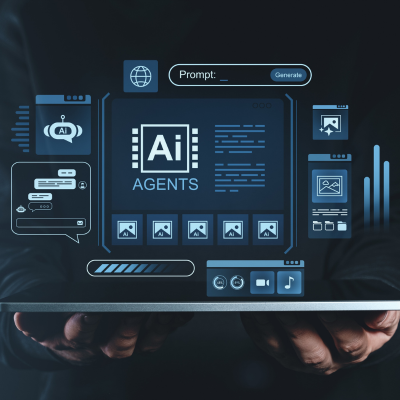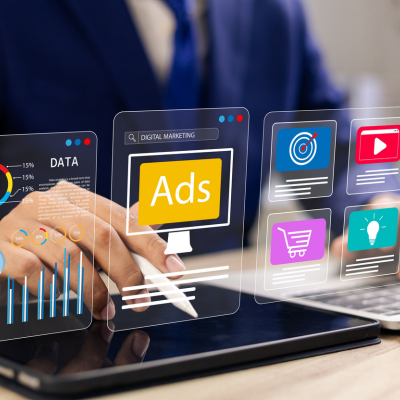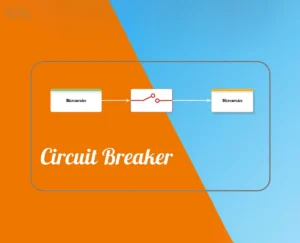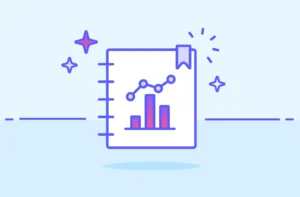The digital age has rewired consumer behavior, compressing decision-making into fleeting, intent-driven instants. Micro-moments marketing is the art and science of meeting customers precisely when they turn to their devices—smartphones in hand—to learn, do, find, or buy. For brands, these moments are not just opportunities but imperatives: win here, and you win loyalty, conversions, and market share. Lose here, and you fade into the background noise of the digital marketplace.
This article explores how businesses can master micro-moments marketing, from foundational concepts to advanced, AI-powered tactics. We’ll unpack the four critical micro-moment types, showcase brands that excel in real-time engagement, and provide a step-by-step guide to measuring and optimizing your efforts. Finally, we’ll look at how forward-thinking education—such as the Digital Marketing and Artificial Intelligence course—equips marketers to lead in this fast-evolving discipline.
Understanding Micro-Moments Marketing
Micro-moments are those split-second instances when consumers reflexively reach for their devices to fulfill an immediate need—whether it’s answering a question, finding a nearby store, learning a new skill, or making a purchase. These moments are characterized by high intent, short attention spans, and a demand for instant gratification.
Google’s research shows that 90% of smartphone users are undecided about a brand before searching online, making these micro-moments marketing pivotal in shaping preferences and driving decisions. The rise of mobile dominance—over 60% of Google searches in the U.S. now happen on smartphones—has made micro-moments marketing not just relevant but essential. Brands that fail to optimize for these moments risk irrelevance in an always-on, mobile-first world.
The Four Types of Micro-Moments
I-Want-to-Know Moments
When curiosity strikes, consumers turn to their devices to research, explore, or simply satisfy a question. They’re not yet ready to buy but are gathering information to inform future decisions. Examples include searches like “best colleges for physics majors” or “how does solar energy work?”
Brand Opportunity: Provide authoritative, easily digestible content—blogs, infographics, explainer videos, and FAQs. Optimize for featured snippets and voice search to capture these queries at the top of the results page.
Content Tactics:
- Publish in-depth guides and comparison articles.
- Use schema markup to enhance visibility in search.
- Leverage AI-driven chatbots to answer questions in real time.
I-Want-to-Go Moments
When location matters, consumers seek nearby businesses or directions. These moments are highly local and often immediate, such as “coffee shops near me” or “pharmacy open now”.
Brand Opportunity: Ensure your business is visible on Google Maps, Apple Maps, and local directories. Optimize your Google Business Profile with accurate hours, photos, and reviews. Use geo-fencing ads to reach consumers when they’re physically close to your location.
Channel Tactics:
- Claim and optimize all local listings.
- Encourage and respond to customer reviews.
- Run hyper-local paid search and social campaigns.
I-Want-to-Do Moments
When action is the goal, consumers look for guidance to accomplish a task—whether it’s fixing a leaky faucet, learning to bake sourdough, or volunteering after a disaster.
Brand Opportunity: Offer step-by-step tutorials, how-to videos, interactive tools, and downloadable checklists. Reduce friction by providing clear calls to action, such as “Download the Guide” or “Start Your Free Trial.”
Engagement Tactics:
- Create video demos and live streams.
- Develop interactive apps or augmented reality experiences.
- Use AI to personalize recommendations based on user behavior.
I-Want-to-Buy Moments
When the wallet opens, consumers are ready to purchase but may need reassurance or a nudge. They compare products, read reviews, and look for the best deal—searches like “top-rated noise canceling headphones under $100” or “best running shoes for flat feet”.
Brand Opportunity: Simplify the path to purchase with clear product information, comparison tools, customer reviews, and seamless checkout. Offer limited-time promotions or free shipping to tip the scales in your favor.
Conversion Tactics:
- Display trust signals like ratings, certifications, and return policies.
- Implement one-click ordering and save cart functionality.
- Use retargeting ads to bring hesitant shoppers back.
Mobile Influence: The Engine of Micro-Moments Marketing
Mobile devices are the primary gateway for micro-moments marketing, with consumers expecting fast, frictionless experiences wherever they are. A mobile-first strategy is non-negotiable: ensure your website loads instantly, forms are easy to complete, and content is readable on small screens.
Progressive web apps (PWAs), accelerated mobile pages (AMP), and app-based loyalty programs can dramatically enhance engagement. Voice search is also rising, with consumers asking devices for quick answers. Optimizing for natural language queries and featured snippets will help your brand stay ahead.
Real-World Success Stories
While many brands have mastered micro-moments marketing, the real lesson is in the strategy, not just the tools. For example, Starbucks uses geo-fencing, mobile ordering, and personalized rewards to engage customers in “I-want-to-go” and “I-want-to-buy” moments. Amazon leverages one-click ordering, same-day delivery, and AI-driven recommendations to dominate “I-want-to-buy” moments. Sephora blends in-store and digital experiences with virtual try-ons and instant tutorials for “I-want-to-do” moments.
However, the true differentiator is not just technology but marketing acumen—understanding consumer intent, anticipating needs, and delivering seamless, personalized experiences across every touchpoint.
Advanced Tactics for Micro-Moments Mastery
AI and Personalization
Artificial intelligence is transforming micro-moments marketing by enabling hyper-personalized content, product recommendations, and real-time customer support. Machine learning algorithms analyze browsing behavior, purchase history, and even sentiment to deliver the right message at the right time.
Practical Steps:
- Implement AI-powered chatbots for instant support.
- Use predictive analytics to anticipate customer needs.
- Personalize email and app notifications based on user behavior.
Content That Converts
Storytelling remains a powerful tool. Narratives that resonate with consumers’ aspirations, challenges, and values build emotional connections and brand loyalty. But in micro-moments, content must also be actionable—clear, concise, and designed to drive immediate outcomes.
Content Formats to Explore:
- Short-form video and GIFs for quick consumption.
- Interactive quizzes and calculators.
- User-generated content and live Q&A sessions.
Real-Time Engagement
Speed is critical. Consumers expect instant answers, so brands must monitor social media, review sites, and search trends to respond in real time. Social listening tools and AI-driven analytics can help you stay ahead of the conversation.
Measuring Success: Analytics and Optimization
Data is your compass. Track metrics like click-through rates, time on page, conversion rates, and customer satisfaction scores to gauge the effectiveness of your micro-moments marketing strategy. Use A/B testing to refine messaging, design, and calls to action.
Key Performance Indicators:
- Engagement: Clicks, shares, comments, and video views.
- Conversion: Sign-ups, downloads, purchases, and repeat visits.
- Retention: App opens, loyalty program activity, and customer lifetime value.
Tools to Consider:
- Google Analytics for web and app behavior.
- Heatmaps and session recordings to understand user journeys.
- CRM platforms to track customer interactions across channels.
The Future of Micro-Moments Marketing
As technology evolves, so do consumer expectations. Voice search, augmented reality, and predictive analytics will play increasingly prominent roles. Brands that invest in AI, machine learning, and omnichannel integration will lead the next wave of micro-moments marketing.
Education is critical to staying ahead. Comprehensive programs like the Digital Marketing and Artificial Intelligence course provide hands-on experience with the latest tools, strategies, and ethical considerations in AI-driven marketing. These courses blend theory with real-world projects, preparing professionals to design and execute campaigns that win in the micro-moment era.
Actionable Roadmap for Marketers
- Audit Your Customer Journey
Map every touchpoint where micro-moments occur—search, social, email, app, and in-store. Identify gaps and opportunities for real-time engagement. - Optimize for Mobile and Voice
Ensure your digital properties are mobile-friendly and voice-search optimized. Test loading speeds, form fields, and navigation on multiple devices. - Leverage AI and Data
Use AI to personalize content, predict needs, and automate responses. Invest in analytics to measure impact and iterate quickly. - Create Compelling, Actionable Content
Develop content formats that match the intent of each micro-moment—guides for “know,” maps for “go,” tutorials for “do,” and comparisons for “buy.” - Train and Upskill Your Team
Equip your marketers with the latest knowledge through advanced courses that cover micro-moments marketing, AI applications, and data-driven decision-making.
FAQs
What is micro-moments marketing?
Micro-moments marketing is the practice of engaging consumers at the precise moments they turn to their devices to learn, do, find, or buy something. It’s about delivering the right message, content, or offer in real time to influence decisions and build loyalty.
What are the four types of micro-moments?
The four types are I-Want-to-Know, I-Want-to-Go, I-Want-to-Do, and I-Want-to-Buy moments. Each represents a unique intent and requires tailored marketing strategies.
How important is mobile in micro-moments marketing?
Mobile is essential, as most micro-moments occur on smartphones. A mobile-first strategy ensures your brand is present and frictionless when consumers need you most.
Can AI enhance micro-moments marketing?
Absolutely. AI enables personalization, predictive analytics, and real-time engagement, making your micro-moments marketing more effective and scalable.
How can businesses measure the success of micro-moments marketing?
Track engagement, conversion, and retention metrics using analytics tools. Continuously test and optimize your campaigns based on data insights.
What role does content play in micro-moments?
Content must be relevant, concise, and actionable—designed to meet the specific need of the moment, whether it’s answering a question, guiding a task, or closing a sale.
Conclusion
Micro-moments marketing is not a trend but a fundamental shift in how brands and consumers interact. By understanding the four types of micro-moments, optimizing for mobile and voice, leveraging AI, and creating compelling content, businesses can capture attention, drive action, and build lasting relationships.
For marketers seeking to master these strategies, advanced education is invaluable. The Digital Marketing and Artificial Intelligence course offers a rigorous, practical curriculum that covers micro-moments marketing, AI applications, and the latest tools for real-time engagement. With hands-on projects and industry-aligned training, this program prepares professionals to lead in the age of instant, intent-driven marketing.
In a world where seconds count, micro-moments marketing is your competitive edge. Start optimizing, start engaging, and start winning—one moment at a time.










